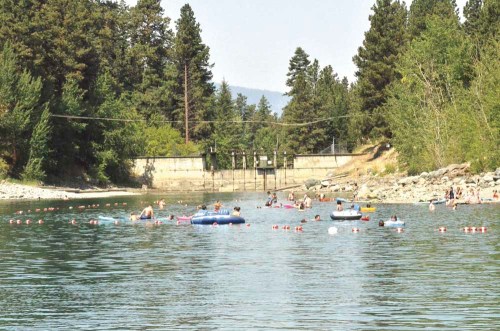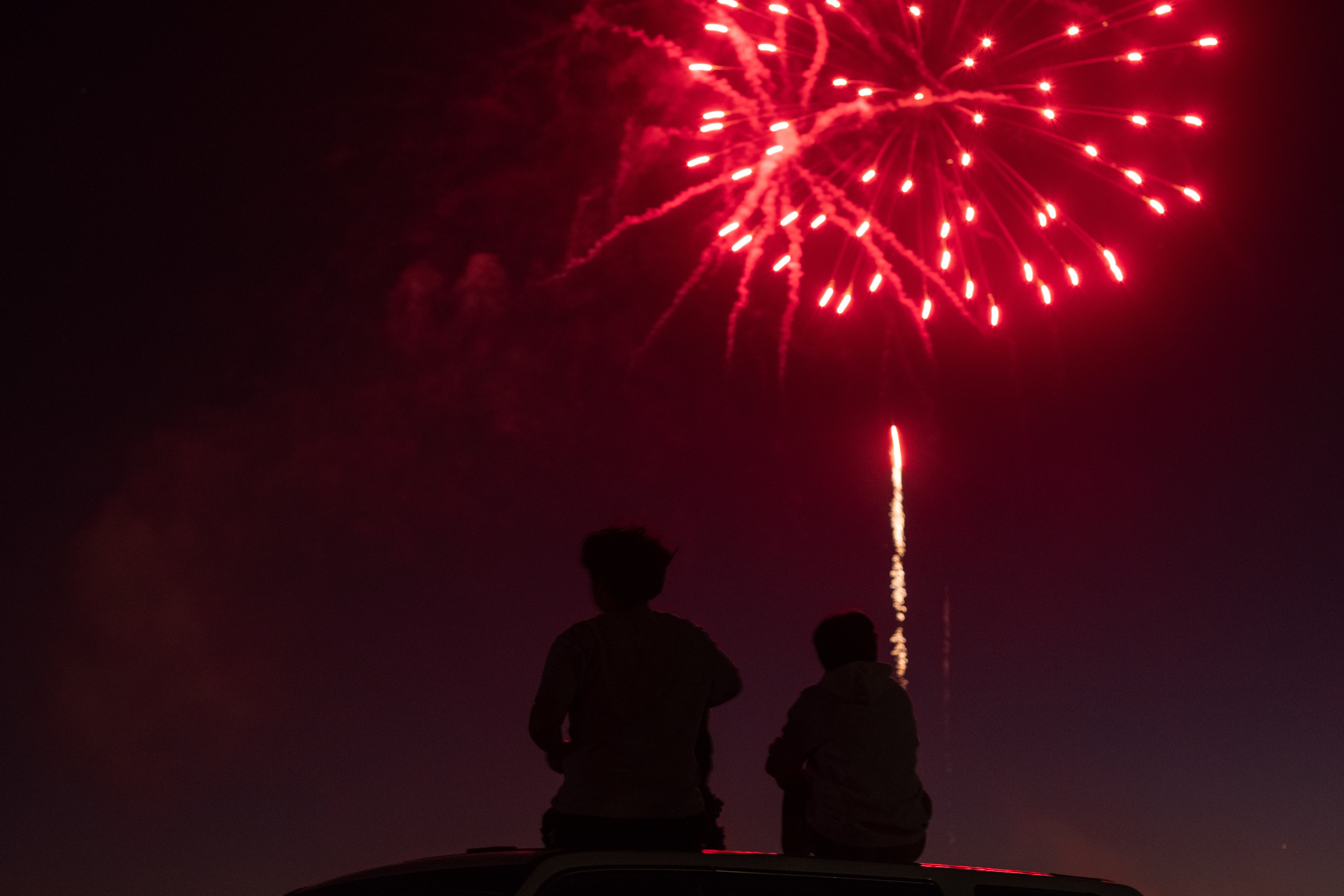Wallowa Lake Dam funding goes through
Published 7:00 am Friday, August 20, 2021

- Swimmers on July 30, 2021, enjoy the water of Wallowa Lake near the Wallowa Lake Dam. Sen. Bill Hansell, R-Athena, confirmed the Legislature approved the $14 million in state lottery funds being counted on to pay the lion’s share of replacing the dam.
ENTERPRISE — Now that the $14 million in state lottery funds has been approved by the Oregon Legislature for the refurbishment of the century-old Wallowa Lake Dam, the big question that remains is what kind of fish passage the dam will include.
State Sen. Bill Hansell, R-Athena, confirmed last month the lottery funds were approved by the Legislature and Gov. Kate Brown was expected to sign the budget.
“We’ve got the funding across the goal line, and now it’s implementing the application of it,” Hansell said. “Now the baton will be handed off to where they sell the bonds.”
He said the bonds are expected to be sold in the spring of 2022 and the actual funds will come through later. He said he is unsure of the exact timeline.
“As far as I know we’re back to what we’ve always done,” he said.
He added the stakeholders in the dam project can begin spending on it before getting the proceeds from the bonds, but they do so at their own risk.
The four major stakeholders are the Wallowa Lake Irrigation District — the owner of the dam — the Oregon Department of Fish and Wildlife, the Nez Perce Tribe’s Department of Fisheries Resources Management and the Confederated Tribes of the Umatilla Indian Reservation. Minor stakeholders also are involved, including the U.S. Fish and Wildlife Service, which has jurisdiction over bull trout; the National Oceanic and Atmospheric Administration; and the Oregon Department of Environmental Quality.
A year ago, lottery sales were far too low to fund the bonds.
“We didn’t collect enough to spend what we’d authorized,” Hansell said.
The project originally called for a $16 million refurbishment of the dam that would improve the spillways, include a fish passage, add more concrete for weight, replace the five conduit gates with new ones and to upgrade the electrical and instrumentation, according to the June 23, 2020, Wallowa County Chieftain.
Dan Butterfield, president of the irrigation district, was encouraged by the news from the Legislature.
“We keep gaining,” he said. “Everything’s looking good.”
The $2 million difference between the lottery funds and the overall cost is supposed to be made up by “other sources,” Butterfield said, adding that the stakeholders may need to reassess the final cost given the increasing cost of building materials.
Jim Harbeck, the field office supervisor for Nez Perce Fisheries, said the latest cost estimates were from 2017.
“I imagine those costs are higher now,” he said.
Butterfield said the stakeholders have applied for a grant through the American Rescue Plan Act that could help with the extra funding.
He said the project has been in the works for about 20 years. Now, he said they are planning to begin construction in fall 2022 and have it ready by spring 2023.
“That’s what our engineer’s designing for and planning for,” he said. “We sure would’ve loved to have had that dam this year. … We’ll be able to go another 8 feet (of water) with the new dam. Having that extra storage will be huge for this valley.”
Fish passage options
But it’s up to the engineer, McMillen, Jacobs and Associates of Boise, Idaho, to determine the type of fish passage that will be included and to finalize the plans for the dam.
Wallowa County native Mort McMillen, the engineer on the project, said a fish passage to allow both upstream and downstream migration of fish is being worked into the project. It will be determined by the stakeholders based on the plans his firm comes up with.
“Everybody has their preferences,” McMillen said. “We haven’t arrived at the final selection. … We’re working really good as a group.”
The fish passage is a crucial element of the dam’s new design. In fact, Harbeck said, state law requires the inclusion of a satisfactory fish passage.
There are different options for the type of fish passage. The tribe prefers a “volitional passage” — one that allows fish to ascend to or descend from the lake at their own volition. That allows adults to swim upstream to spawn and juveniles to swim downstream once hatched.
“It lets fish pass when they so choose as opposed to putting some type of human time stamp on it,” he said.
Jeff Yanke, a watershed manager with the ODFW, said it’s up to the engineer to select a type of passage.
“We’ve been talking concepts and it’s up to them to pick one,” he said.
The “volitional passage” is often known as a fish ladder.
Another option is the “trap and haul” option, which is a type of water elevator to move the fish, Yanke said.









